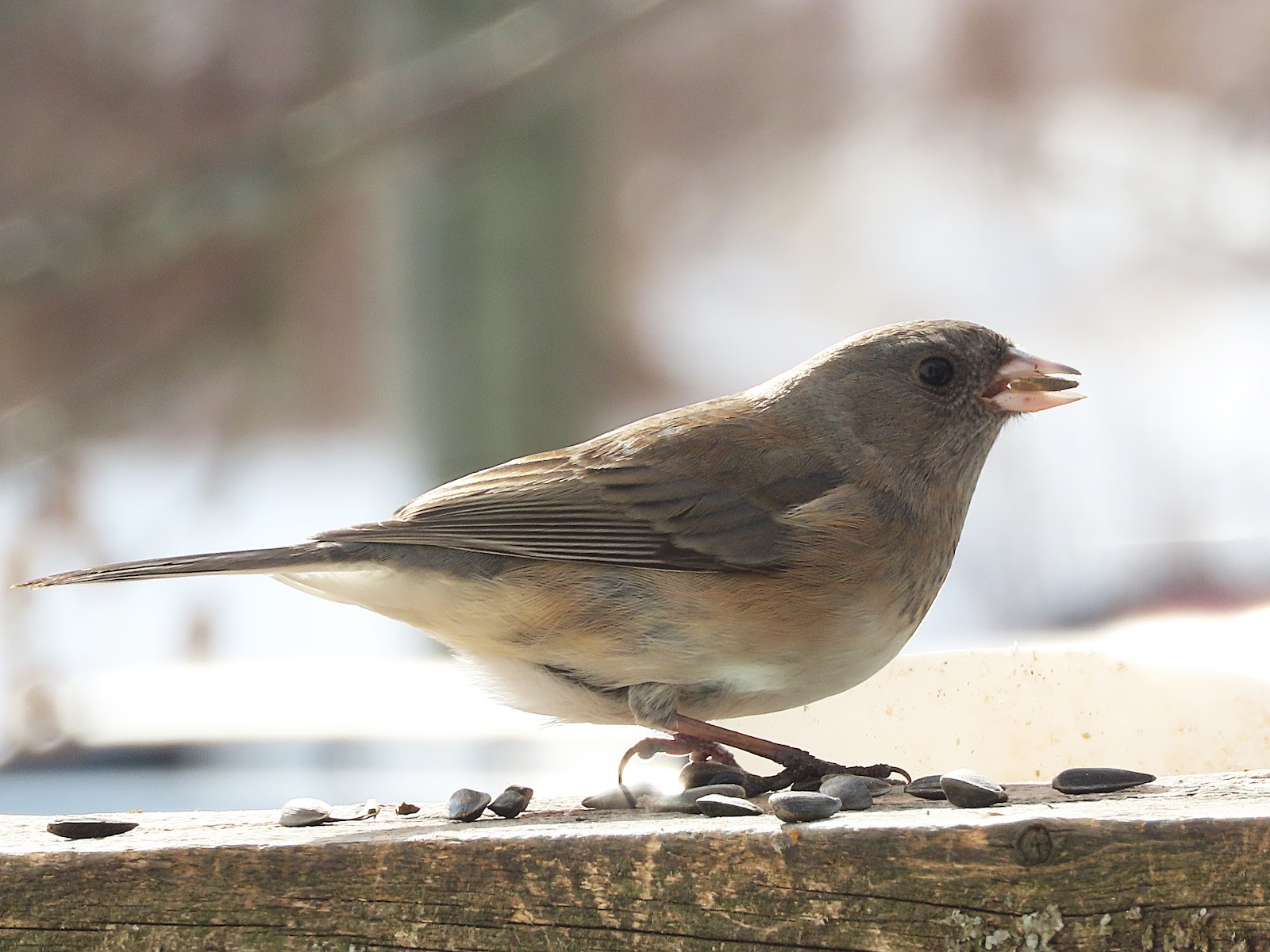NATURE MONCTON NATURE NEWS
February 26, 2025
Nature Moncton members as well as any
naturalist in New Brunswick or beyond are invited to share their photos
and descriptions of recent nature sightings to build a fresh (almost) daily
edition of Nature News
To respond by e-mail, please address your message to the
information line editor, nelsonpoirier435@gmail.com .
Please advise the editor at nelsonpoirier435@gmail.com and proofreader Louise Nichols at Nicholsl@eastlink.ca if any errors are noted in wording or photo labelling.
For more information on Nature Moncton, check the website
at www.naturemoncton.com.
Proofreading courtesy of Louise Nichols
**The annual ever-popular Nature Moncton birdfeeder tour
will take place on Saturday, March 8. A complete write-up will be available
tomorrow morning.
**Reports of the northern mockingbird would appear to be
down in numbers this season; however, Pat Fox has a northern mockingbird
coming to her Riverview feeder yard and enjoying peanut butter.
**The dark-eyed junco usually
prefers feeding on the ground at birdfeeders. John Inman has a female
dark-eyed junco (photo attached) that has seemed to prefer aboveground
spread food feeder all winter rather than the ground spread seed like the rest
of them, and a swamp sparrow continues to visit for a while longer
before it heads off to a nesting territory.
**Elaine Gallant watched a ruffed grouse on
Tuesday morning in an urban front yard in West Riverview as it spent most of
the day under a large blue spruce.
**Mason bee nest boxes
Fred Dube has built a batch of
mason bee nest boxes for Nature Moncton, with a photo attached below.
The units are 5 ½ in. long and
3 ½ in. square with the nest holes 5 in. deep and 5/16 in. diameter to meet
suggested preferences for mason bees. The donation price is $10 each and the boxes will
be available at Nature Moncton events or can be picked up in town by emailing nelsonpoirier435@gmail.com.
Mason bees are very significant
pollinators and are one of the first bee species out on their reproductive
mission in spring. They are valuable pollinators in the first warm days of
spring and complete their mission over two to four weeks.
The mason bee is a solitary bee
yet is attracted to the series of holes these man-made structures provide. They
approximate the size of a housefly and are nonaggressive. It is suggested the
structures be placed with a southeast exposure to get maximum warmth from the
sun for early spring nest preparation. These structures should be up and in
place by April 1st due to the early spring activity of the species that will fill
each hole with five chambers divided by a mud cap and, when full, seal the hole
with mud. The young will emerge the next spring.
Nelson Poirier
Nature Moncton





